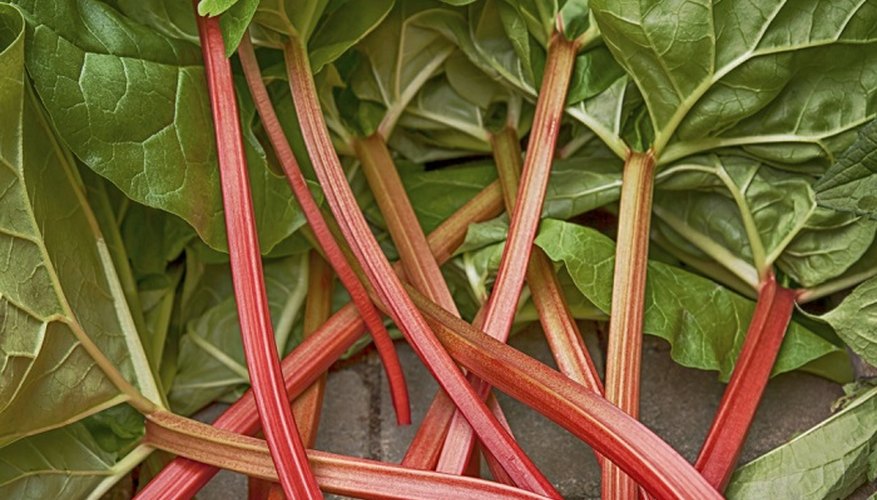Although many admire rhubarb for its tart flavour, the plant contains a harmful chemical substance known as oxalic acid. This acid reacts with nutrients inside the body to cause a number of health issues, including joint pain and kidney stones. Distilling the oxalic acid from rhubarb leaves into water and then adding calcium carbonate in the form of precipitated chalk will cause the oxalic acid to form into oxalate crystals, which can then be strained from the mixture.
- Although many admire rhubarb for its tart flavour, the plant contains a harmful chemical substance known as oxalic acid.
- Distilling the oxalic acid from rhubarb leaves into water and then adding calcium carbonate in the form of precipitated chalk will cause the oxalic acid to form into oxalate crystals, which can then be strained from the mixture.
With digital scales, find the combined weight of your rhubarb leaves in grams. This information is used to find the proper amount of precipitated chalk to add to the juice.
Crush and grind your rhubarb leaves with a large pestle on top of a cutting board. After the leaves have been thoroughly ground, place them into a large pan. Wash your hands with soap and warm water afterwards.
Add 4.5 litres (1 gallon) of cold water to the large pan containing your rhubarb leaves. Cover the pan and let the leaves sit for about three days to release all oils.
- Add 4.5 litres (1 gallon) of cold water to the large pan containing your rhubarb leaves.
Use metal tongs to pull out the larger remaining pieces of rhubarb leaves and place them in a nylon straining bag. Squeeze the bag over the pan to return as much liquid as possible and discard the pulp. Wash your hands and the tongs thoroughly with soap and warm water afterwards; do the same with the nylon straining bag if you plan to reuse it.
Add 1 gram (0.035 oz) of precipitated chalk to the rhubarb mixture for each 100 g (3.5 oz) of weight measured earlier. Stir in the precipitated chalk with a wooden spoon and let the mixture sit for three hours. Oxalate crystals may begin to settle at the bottom of the rhubarb mixture.
Taste a small amount of the rhubarb mixture from your wooden spoon. You will be able to note the presence of oxalic acid as an acidic, sour taste. Add another 0.25 g (0.009 oz) of precipitated chalk for each 100 g (3.5 oz) of rhubarb leaves if you can detect the taste of oxalic acid. Let the mixture sit for another three hours and repeat this step.
If you are making the rhubarb mixture to create wine, continue with the wine-making process. Oxalate crystals and any remaining rhubarb leaf residue will be removed during the first racking. For juice and other rhubarb-based liquids, pour the mixture through a fine wire mesh strainer placed on top of another large pan. This will remove oxalate crystals, excess precipitated chalk and rhubarb leaf residue.
- Taste a small amount of the rhubarb mixture from your wooden spoon.
- For juice and other rhubarb-based liquids, pour the mixture through a fine wire mesh strainer placed on top of another large pan.
